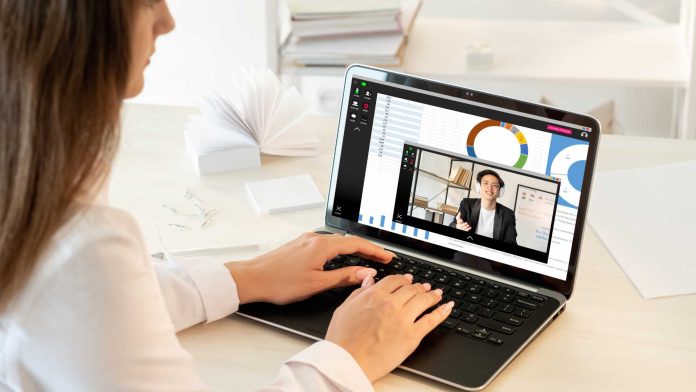Table of Contents
Uncover the essential components of impactful educational videos and master the art of crafting captivating content that elevates learning results.
What Makes a Good Educational Video?
Since the advent of educational technology, traditional learning tools like textbooks and worksheets have become increasingly supplemented by e-learning tools. One of the most popular e-learning tools has been educational videos, which have taken the education world by storm and truly grown into a dominant force.
But with millions of videos currently floating around the internet, it’s important to understand what exactly it is about video that makes it an effective educational tool. Is it just the fancy animations and the eloquent narrator, or is there a deeper formula at work? While superficial features play a role, the true essence of an impactful educational video goes far beyond. This article will look into the different components that go into producing a top-notch educational video.
Clarity of Purpose
 Every effective educational video starts with a crystal-clear purpose. This is the foundation. It sets the tone for the content, acting as the guiding light. Whether the aim is simplifying the complexities of quantum physics, providing insights into classic literature, or perhaps giving a crash course on contemporary global issues, that purpose must be made immediately apparent. This clarity acts as a beacon, drawing viewers in and ensuring they remain engaged, knowing precisely what they’re there to learn.
Every effective educational video starts with a crystal-clear purpose. This is the foundation. It sets the tone for the content, acting as the guiding light. Whether the aim is simplifying the complexities of quantum physics, providing insights into classic literature, or perhaps giving a crash course on contemporary global issues, that purpose must be made immediately apparent. This clarity acts as a beacon, drawing viewers in and ensuring they remain engaged, knowing precisely what they’re there to learn.
Engaging Content
An educational video can boast the most advanced animations or the most lyrical of narrators. However, without engaging content, it will fail to captivate its audience. It’s the essence of the message, how it’s conveyed, peppered with real-life examples, sprinkled with relatable anecdotes, and occasionally seasoned with humour, that truly makes the difference. The content must speak to the viewer, spark their curiosity, and urge them to delve deeper into the topic.
Creating engaging content can involve many different things: an exciting script, effective casting, a captivating visual style, and much more. Balancing all these elements can quickly become overwhelming, especially for those who have limited experience in producing videos. This is why many video production companies, such as Perspective Pictures, provide specially designed educational video production services to help educators meet all their targets.
High-Quality Visuals
Visuals are the backbone of videos. They transform abstract concepts into tangible representations. A video with blurry or pixelated images will likely lose its audience, no matter how engaging the content. Moreover, while visuals are vital, they should work in harmony with the content; enhancing it, not overshadowing it. Quality visuals provide clarity, and in the world of education, clarity is king.
Appropriate Duration
 The age-old saying, “less is more,” holds true even for educational videos. While it’s essential to ensure the content is comprehensive, dragging it out can be counterproductive. Viewer attention spans vary, but they all have limits. Striking the right balance between depth and duration is a nuanced artform, ensuring content richness whilst simultaneously maintaining viewer engagement.
The age-old saying, “less is more,” holds true even for educational videos. While it’s essential to ensure the content is comprehensive, dragging it out can be counterproductive. Viewer attention spans vary, but they all have limits. Striking the right balance between depth and duration is a nuanced artform, ensuring content richness whilst simultaneously maintaining viewer engagement.
Interactive Elements
The true power of digital education lies in its potential for interactivity. The days of passive learning are dwindling. Today, learners crave interaction. Elements like in-video quizzes, clickable resources, or even simple interactive graphics can significantly amplify a video’s educational impact. They provide learners with an active role, ensuring better content retention and engagement.
Credible Sources
 In the age of information overload, credibility is paramount. Backing up statements or claims with credible, reputable sources not only solidifies the information but also instils trust among viewers. When an educational video showcases well-researched content, viewers are more likely to perceive it as authentic and authoritative, enhancing the overall learning experience.
In the age of information overload, credibility is paramount. Backing up statements or claims with credible, reputable sources not only solidifies the information but also instils trust among viewers. When an educational video showcases well-researched content, viewers are more likely to perceive it as authentic and authoritative, enhancing the overall learning experience.
Relatable Examples
For abstract or complex concepts, relatable examples are the bridge between confusion and clarity. By drawing parallels with familiar scenarios or everyday experiences, educational videos can demystify intricate topics, making them accessible and understandable to all, irrespective of their prior knowledge.
Diverse Learning Styles
It’s a recognised fact that people have varied learning styles. Some are visual, some auditory, while others are kinesthetic. An exceptional educational video understands this diversity and incorporates elements catering to each of these styles. By doing so, it broadens its reach, resonating with a more expansive audience segment.
Accessible to All
True education is inclusive. Educational videos need to be universally accessible, catering to people who might struggle with disabilities or barriers to their learning. Simple features, such as subtitles for those hard of hearing or descriptive audio for visually impaired viewers, can make all the difference. These additions ensure that the content remains inclusive and accessible to all.
Cultural Sensitivity
 In our interconnected world, content created in one corner can be accessed across the globe. This global audience brings a myriad of cultural backgrounds. Educational videos, therefore, need to tread carefully, ensuring they remain culturally sensitive, respectful, and universally relatable.
In our interconnected world, content created in one corner can be accessed across the globe. This global audience brings a myriad of cultural backgrounds. Educational videos, therefore, need to tread carefully, ensuring they remain culturally sensitive, respectful, and universally relatable.
Clear Call-to-Action
Lastly, after imparting the knowledge, what next? An effective educational video should guide its viewers towards the next step in their learning journey, be it additional readings, forums for discussions, or related courses. This clear call-to-action ensures the learning doesn’t just stop when the video ends.
Final Thoughts
The best educational videos are not just about sleek visuals or high-tech tools. They involve a harmonious blend of clarity, engagement, credibility, and inclusivity. Creating an effective educational video is also about recognising the diverse learning styles and crafting content that speaks to everyone.
In a world that’s rapidly embracing digital education, understanding what makes a good educational video is more crucial than ever. As content creators, educators, or simply lifelong learners, it’s important to ensure that the educational videos learners engage with or create are not just good, but genuinely transformative.


